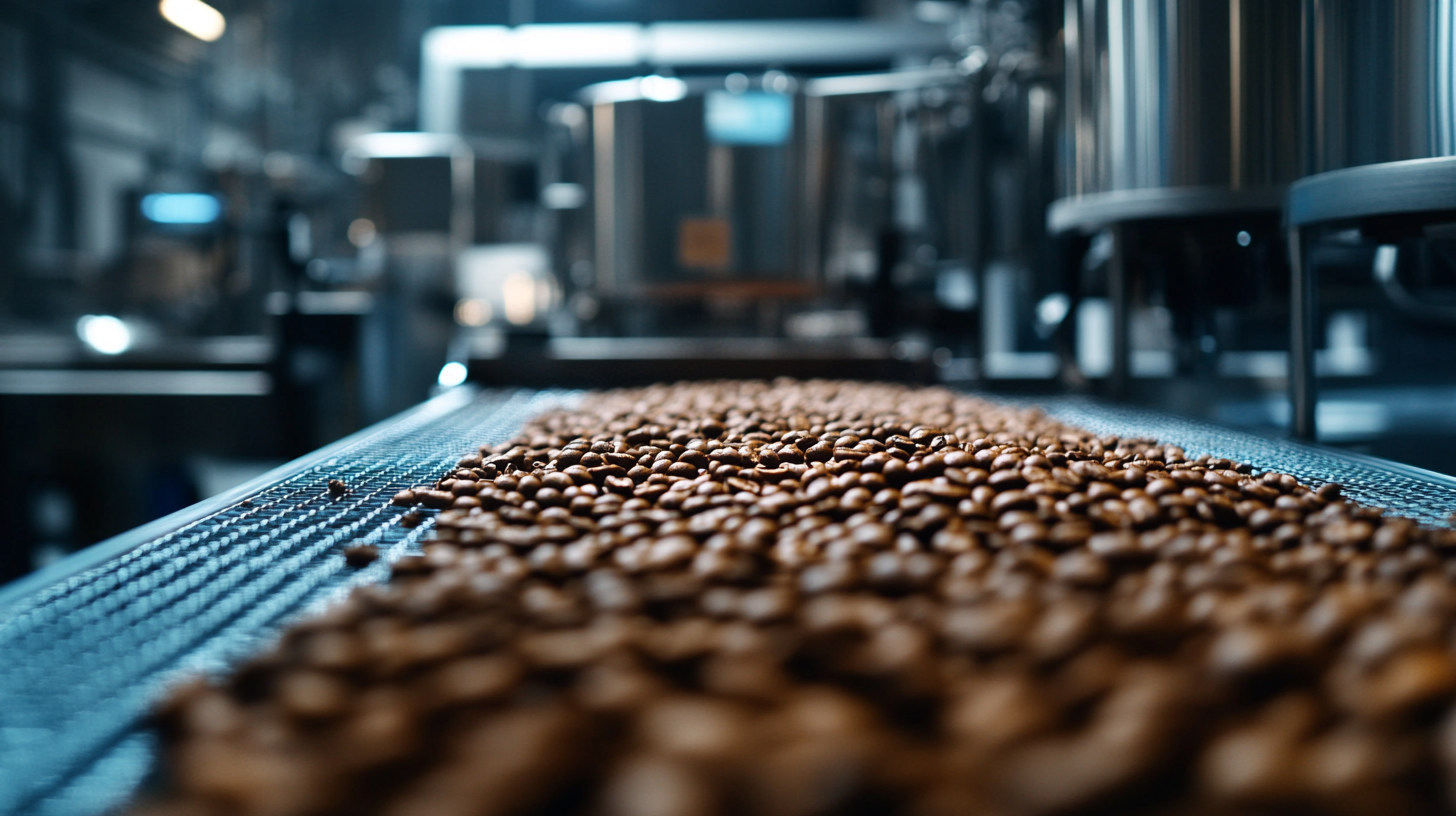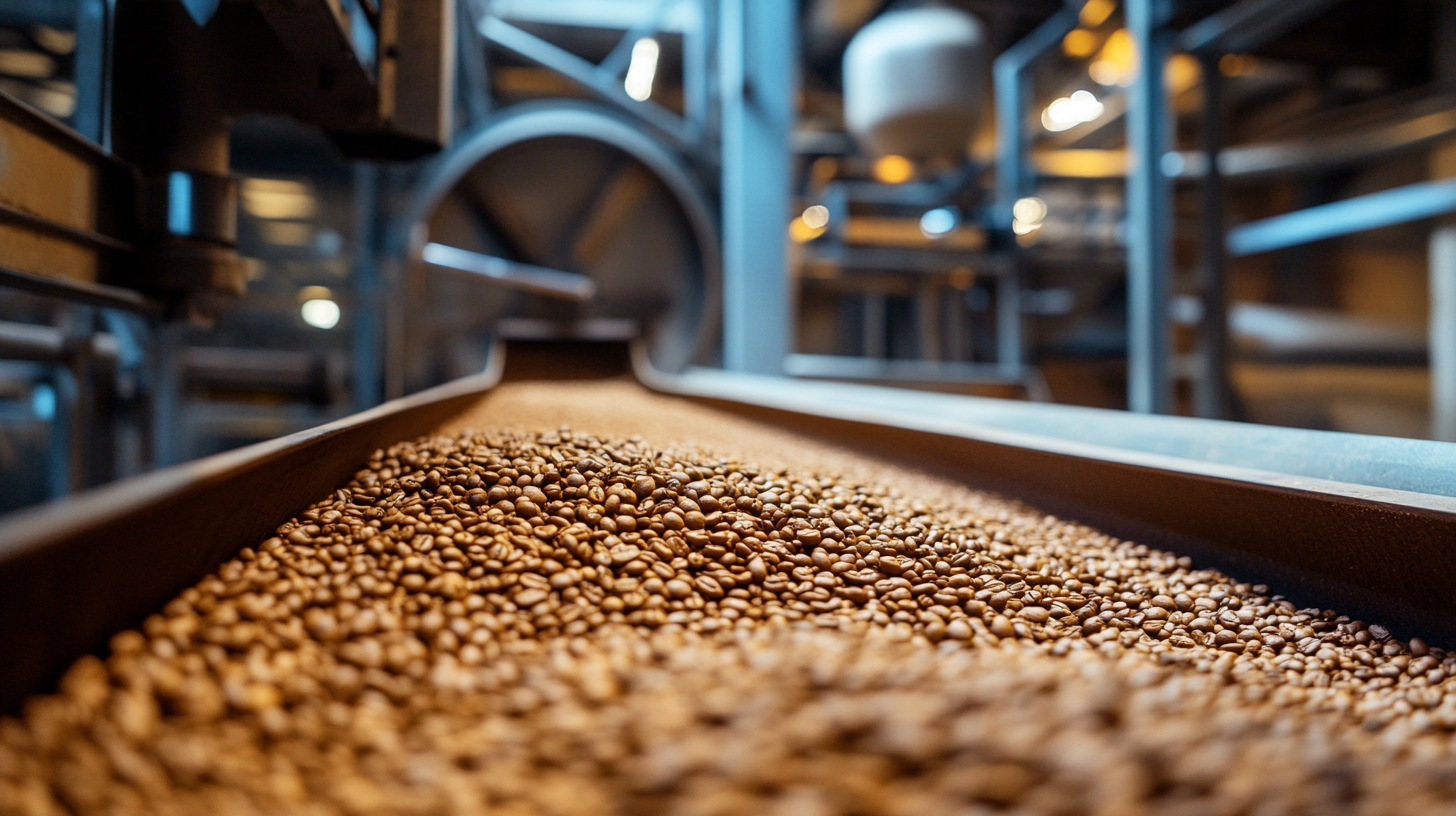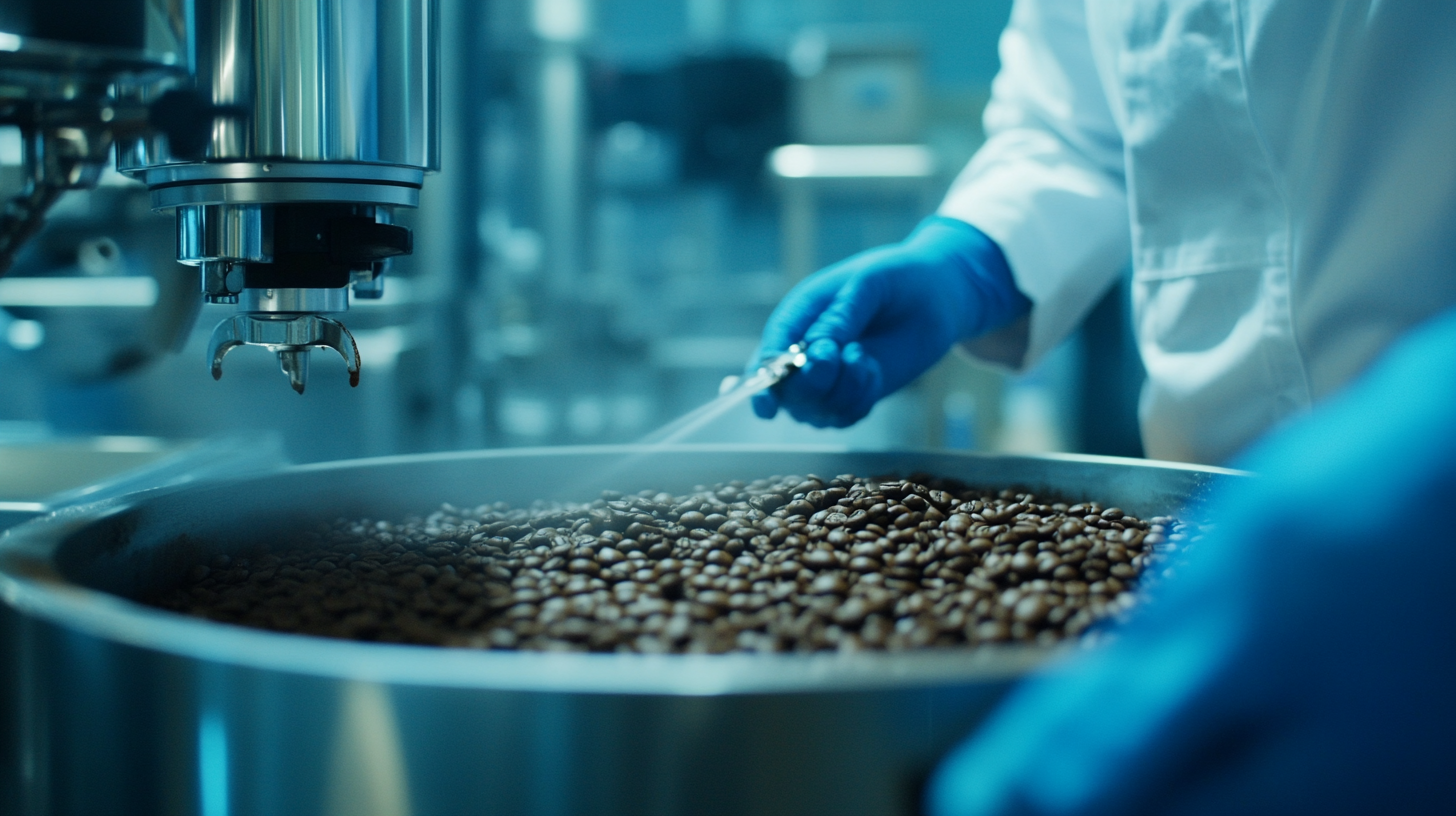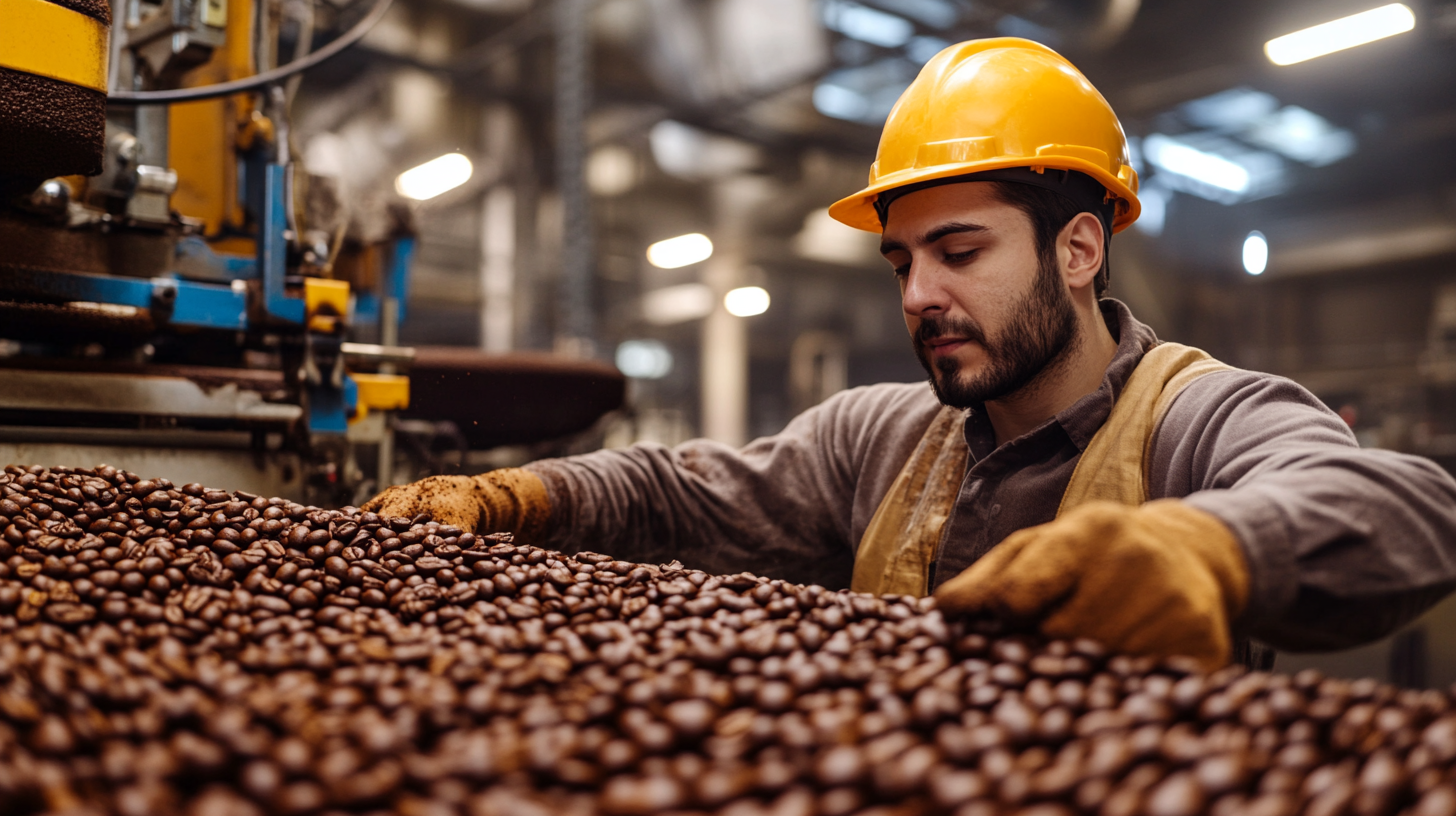Achieving Superior Quality in Coffee Bean Production and How to Ensure Your Supply Chain Compliance
Projections indicate that the global coffee market will receive an unprecedented boost, with estimates pegging it at USD 102.15 billion by 2024 (ResearchAndMarkets, 2020) at a growth rate of 5.5%. Within this vibrant industry, demand for high-quality coffee beans is emerging more than ever before, indicating a shift in consumer preference toward premium products. A report from the Specialty Coffee Association states that around 70% of consumers are willing to pay additional costs for sustainably sourced, good quality coffee, demanding that producers change their practices to respond to the evolving market standards.
To produce superior quality coffee beans, a firm must not only work on growing methods and selection but also ensure compliance throughout the supply chain. Transparency in production and sustainability are key factors in developing consumer trust and brand loyalty, according to the International Coffee Organization. By concentrating on high-quality coffee beans and strictly adhering to supply chain regulations, producers will improve their image, creating a guarantee of consistency in the quality of their products, thus enabling them to carve for themselves a greater chunk of the ever-increasing premium coffee market.

Strategies for Selecting High-Quality Coffee Bean Varieties to Enhance Flavor Profiles
According to the Specialty Coffee Association, over 40% of consumers are willing to spend extra money for coffee that qualifies for the specialty title. This emphasizes the requirements for flavors that are unique and top-notch. Choosing the best varieties of coffee bean will cause a great difference in the end product, thus a need for the producers to know the ins and outs of those beans. A good pointer in selecting the high quality coffee varieties should come from origin and method of processing. Regions known for fine coffee, eg. Ethiopia and Colombia, have unique situations with importance added by traditional processing that refreshes the already complex flavors, according to the report of International Coffee Organization, it can further offers fruits and flowery flavors from those regions to obtain better tasting experience. It cannot be overemphasized too that the genetics of the bean matter. Research from the Coffee Research Institute shows that certain varietals, like Geisha and Bourbon, possess some of the really best flavor profiles and can bring much bigger, higher premiums. It allows the farmer to improve his flavor profile while also catering to the market's increasing demand for ethically sourced coffee by investing in such high-quality varietals under sustainable methods.

The Role of Climate and Soil Conditions in Coffee Bean Quality and Production Yield
Coffee is influenced by several factors such as the climatic condition, as well as the soil condition of the community where it is grown. After ideal making of temperature, humidity, and rainfall patterns, the thesebecame characteristics of beans, which will then cause effects on the satisfaction for the consumer at the end with respect to the flavor of the beans. Coffee plants generally do well in limited varieties of climates, usually found in tropical areas of the world where their growth is fully supported by altitude, temperatures that range from 60°F to 70°F, and certain rainfall amounts. As with all other variations of climatic conditions, coffee will not be produced well if strayed too far from such norms, hence the knowledge of the specific local environment.
These also contribute significantly to the overall health and yield of any coffee plants. Organic matter and nutrients-rich well-drained soil will be an effective substrate for good quality beans. Soil pH and minerals can affect growth rates with quality characteristic changes of coffee cherries. Regular soil testing is paramount for a farmer to ensure that, in addition to any chemical and physical analysis, a further important analysis that should be done is to investigate its proven ability to support crops. Mulching, organic fertilization coupled with soil rotation are effective practices, which will improve yields and thus, the quality of beans in the end.
Life on the farm, based on production and improvements to be made prestigious as well as modern, will always be an integral part of sustainable practices that promote both climate resilience and health for soils. In general, the fate of coffee bean cultivation is narrated by climate conditions, whereby agricultural practices determine the final outcomes. In that sense, producers are content with having produced the best quality coffee beans that have been required for an increasingly competitive market.

Implementing Sustainable Practices in Coffee Cultivation: Environmental and Economic Benefits
In fact, the coffee industry has opened up increasingly to the tenants of sustainable plantation practices over the years, both for the health of the environment and for the economic health of the industry itself. The Specialty Coffee Association reports that the introduction of sustainable practices could effectively reduce the carbon footprint of coffee production by thirty percent or more. Techniques such as agroforestry, organic farming and integrated pest management promote effective biodiversity as well as soil quality, which is critical for the health of coffee plants.
Sustainable practices indeed have great economic advantages for farmers. According to a study by the World Bank, coffee growers practicing environmentalism improved their efficiency of yields production by 15-20% compared to traditional approaches. Increase in yields means increase in income for farmers and a stably supply chain that less vulnerable to the tosses brought about by changes in climate. With certification programs like Fair Trade and the Rainforest Alliance, producers can be connected into premiums markets that result in turning sustainability to profit.
The coffee industry, therefore, finds itself at a crossroads in terms of ethics because of the increasing demand from customers for ethically sourced products. A National Coffee Association research indicates that 74% of coffee drinkers would be willing to pay more for sustainably sourced coffee. Quite probably, this data will incentivize producers to adopt sustainable plantation practices for the anticipated market edge that comes with it. This is, because by meeting environmental standards, coffee growers can build such market reputation that attracts those environmentally conscious consumers and secures the sustainability of the business in the long run.

Ensuring Supply Chain Transparency: Key Metrics for Coffee Bean Traceability and Compliance
Militating to realize supply chain transparency in the coffee industry is essential for the maintenance of quality and ethical standards. Traceability of coffee beans is a key parameter for realizing that transparency. By implementing certain systems of traceability, companies can follow their coffee from farm to cup, ensuring that every step involved in its production respects quality and ethics. It directly helps to identify the sources of beans and builds trust with consumers as buyers become increasingly aware of where their coffee originated.
Companies can measure traceability using technologies such as blockchain and IoT devices. Blockchain, for example, stores immutable records centered on each transaction, giving an open history of the coffee's journey. This is combined with IoT devices, capable of monitoring environmental conditions during their transport and storage. Therefore, ensuring that beans have been kept apt for quality in the supply chain. Transparency of these undertakings may also be further established with metrics such as adherence to eco-friendly practices and hopefully fair labor standards.
Routine audits and evaluations are other essential elements measuring adherence to compliance within the supply chain. When evaluations occur, they permit organizations to recognize bottlenecks or lapses in quality and traceability, enabling corrective action to be taken. An engaged supply chain even encourages collaboration between growers, processors, and retailers, creating a shared ecosystem in which standards are upheld. Coffee producers can greatly enhance qualities through these complementary transparency matrix and compliance practices, therefore advancing the sustainable coffee sector.
Leveraging Technology and Data Analytics for Quality Control in Coffee Production and Supply Chains
In order to maintain higher quality in coffee bean production, technology and data analytics are important tools in the fast-paced coffee world of today. According to the Specialty Coffee Association report, over 60% of coffee buyers consider the quality control procedures administered in their supply chain. Different technological ways like IoT devices and machine learning algorithms allow producers to monitor the cultivation and processing stages in real-time, positively affecting supervision and quality assurance.
For instance, sensor-based systems can monitor soil moisture and weather conditions, which are useful in maintaining coffee plant health. Data analytics platforms give farmers insights through trends analyzed over time to make important decisions on harvest timing and processing methods. Such techniques have been shown to improve yield quality by over 25%, according to the International Journal of Agricultural Technology, proving that these technologies are an excellent complement to standard practices.
Furthermore, blockchain technology is hot on the heels of supply chain compliance. By providing transparent and traceable paths from farm to cup, it bolsters the credibility of coffee beans' quality in the eyes of consumers. Studies by the World Economic Forum suggest that discrepancy reduction along the supply chain can be achieved up to 30% by the use of blockchain, thus confirming quality yet promoting sustainability. In a fast-changing coffee market, technology and data analytics will serve as crucial linchpins in managing the quality control and compliance landscape of coffee production. Earth appealing to more and more consumers.


